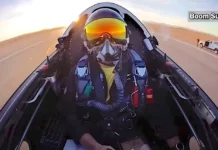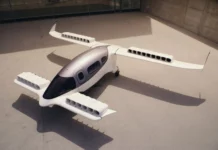The long, slow process to find an alternative to leaded aviation fuel took a step forward in July when the FAA said it will start to evaluate nine possible replacement fuels from five producers. Avgas is the only transportation fuel in the U.S. that still contains added lead, a substance banned from most fuels due to its toxicity. The FAA has set a goal to find a new, unleaded aviation fuel by 2018. This summer, the FAA will analyze the candidate fuels in terms of their impact on the fleet of 167,000 lead-fuel-burning GA aircraft, the production and distribution infrastructure, their environmental impact, toxicology, and cost. By September 1, the FAA will select several of the fuels for further testing. The nine proposals now under evaluation were received from Afton Chemical Company, Avgas LLC, Shell, Swift Fuels, and a consortium of BP, Total, and Hjelmco.
In its first foray into building airplanes for the general aviation market, Airbus said in July it will offer for sale by late 2017 an all-electric two-seat training airplane, the E-Fan 2.0, with a two-hour duration. The company plans to follow that two years later with the E-Fan 4.0, a hybrid four-seat personal airplane that can fly for about three hours. Both aircraft will be built in France by Voltair, an Airbus-owned company. Airbus said the market prices should be competitive with similar GA aircraft, but operating costs will be cut by two-thirds. The company has said it hopes to follow up with an electric-powered regional airliner by 2035.
The FAA has been working to meet a mandate from Congress to allow unmanned aerial systems, or drones, into the national airspace by September 2015, but drone advocates, as well as a government report, have raised questions about the agency’s progress so far. The federal Transportation Department inspector general’s office found in a July analysis that the FAA is unlikely to meet the congressional deadline, and said it is “unclear when, and if, FAA can meet its goals to safely integrate UAS.” Also in July, a federal court of appeals ruled that the FAA’s informal letters and emails ordering some drone users to stop using the devices are just warnings, and are not legally binding.
The NTSB in July declined a petition to re-open its investigation into what caused the loss of TWA Flight 800, which crashed into the Atlantic in July 1996. “Our investigations are never ‘closed,'” said Acting Chairman Christopher A. Hart. “We always remain open to the presentation of new evidence.” However, the evidence and analysis presented by the petitioners did not show the original findings were incorrect, the board said, and none of the physical evidence supported the petitioners’ theory that the streak of light observed by some witnesses was a missile. The original investigation looked for evidence of fragments from a missile warhead and found none, the NTSB said, and the damage patterns within the airplane were consistent with a center wing tank explosion.
Sonex Aircraft flew its JSX-2 single-seat single-engine jet for the first time, in July. The jet was subsequently flown several more times and proved “fast and smooth,” according to test pilot Bob Carlton. Carlton said he practiced stalls in the jet and flew at speeds above 200 mph. The company said it plans to start production of the airplane this year, and will start deliveries in 2015. The airplane will be sold as a quick-build kit with a price of $135,000. The JSX-2 is powered by the PBS TJ-100 engine, which produces about 250 pounds of thrust, the company said.
Diamond Aircraft is reportedly moving ahead with development of the Dart 450, a new single-engine turboprop design…Amelia Rose Earhart flew around the world in a Pilatus PC-12NG in honor of her namesake’s final flight…the first production HondaJet took to the air…a teenage pilot and his father died when they ditched in the Pacific during a round-the-world record attempt…Cessna delivered the first Citation X+…Breaking news in general aviation can be found at www.avweb.com.




